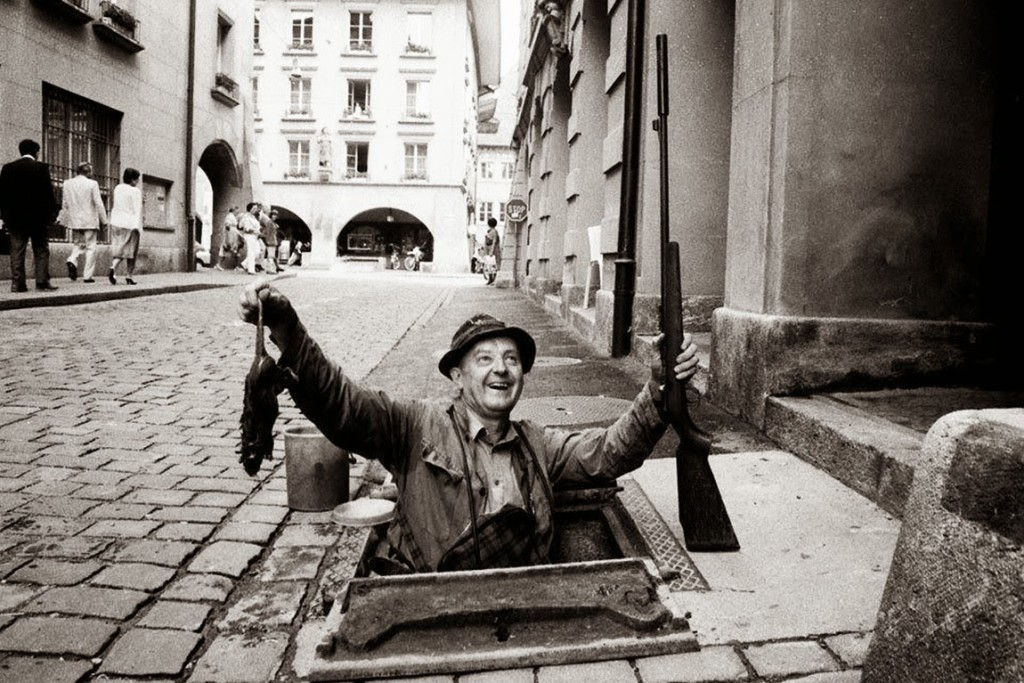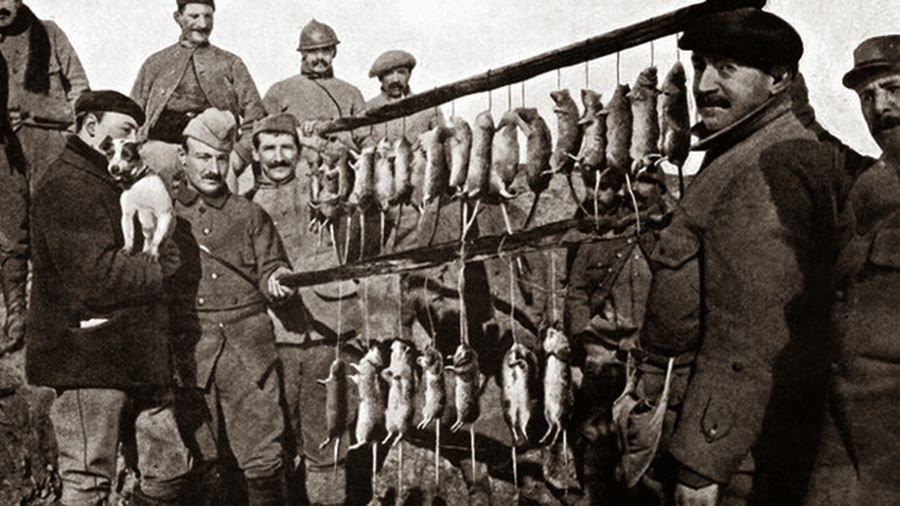Black and Brown Rats are not indigenous to North America or Europe. They are both introduced species native to Asia and can be found in China, Japan and India. First the Black and then the Brown Rat colonized Europe in the 16th century during the spice trade. Rats arrived as stowaways on trading ships bringing spice and cloth to Europe from eastern trade routes. Later in the 18th century Brown Rats similarly spread to North America by ship. In the UK the Brown Rat has replaced the Black Rat almost everywhere while in North America both Black and Brown Rats still are common. It was the Black Rat, not the Norway rat that was host to the fleas carrying the black plague to Europe.
Rat infestations reached a peak in the 1800s in England during the time of rapid industrialization and urbanization. During this time cities were fitly with little infrastructure for dealing with human waste on urban levels. Neccesity is the mother of invention, as they say. Enter the rat catcher and the birth of the rat catching profession.

Rat-catchers would often hunt inside the sewers. Courtesy rarehistoricalphotos.com
Rat-catchers kept the rat population under control preventing the spread of disease to man, most notoriously the Black Plague and to prevent damage to food supplies.They ran high risks of suffering bites and infections, but helped prevent these from spreading to the public. Rat-catchers would capture rats by hand, with specially-bred vermin terriers, or with traps. Payment would be high for catching and selling rats to breeders and to those who ran gaming operations such as rat pits..
“ You lady’s purses, you tack-toed wallops of white silk, you grim grins, I have you on my string as good as legal tender for my room & board at any inn, my dog & I welcome there only so long as you are not, my beauties— & so we’re tied together in a way. This broad-brimmed hat wards off two kinds of yellow, sun & scorn. How dare we subsist on the hard- won crumbs of brutes! But the trap is a good teacher. Somewhere you must have your own canny king, making free with all the best morsels of dark & swarming nations.” Anonymous Rat Catcher to his Rats
There have been several other times in recent history where rat infestations with resulting rat-catching efforts are noteworthy. During WWI “men on both sides of the front were united in the face of a common enemy: the Brown Rat.” A plentiful supply of food, water and shelter in the trenches ensured a rat population explosion. The rats fed on soldiers’ discarded rations tins, but also on a more sinister and plentiful source: human flesh of the dead and dying. Rats destroyed equipment by knawing leather straps; their urine spread disease; they bit men, thieved food and disturbed sleep. Attempts were made to control the population using rat catchers and terriers, with the incentive of a cash sum paid per tail. Ferrets were also in demand for ratting.

A terrier shows off its catch after a 15 minute rat hunt in British trenches. Courtesy of rarehistoricalphotos.com
At home too, vermin was a problem. With skilled rat catchers away at war, the rat population was unchecked, with serious implications for food security. W.P Pycraft, eminent zoologist, estimated in April 1918 an astounding native population of some 40 million rats. As the war drew to a close, the rat menace showed no signs of abating. The problem was such that the Rats and Mice Destruction Act 1919 was passed, and a national Rat Week was declared, where people were encouraged to kill as many rats as possible.
There are but a few famous and noteworthy rat catchers whose names have come down in history along with some wonderful historical photographs of unnamed and unsung heroes.
The most famous and most written about rat catcher is probably Jack Black, rat-catcher and mole destroyer by appointment to Her Majesty Queen Victoria during the middle of the 19th Century. ‘Jack cut a striking figure in his self-made “uniform” of scarlet topcoat, waistcoat, and breeches, with a huge leather belt inset with cast-iron rats.” Jack is known particularly through Henry Mayhew’s account in “London Labour and the London Poor, Vol. 3”, where he tells Mayhew of his work and experiences, including a number of occasions when he nearly died from infections following rat bites. When Jack caught any unusually colored rats, he bred them, to establish new color varieties. He would sell these home-bred domesticated rats as pets to “well-bred young ladies to keep in squirrel cages.” Beatrix Potter (she wrote The Tale of Peter Rabbit) is believed to have been one of Jack’s best customers. Black had a number of other ways he made money aside from collecting rats for the rich and the Queen. Not surprisingly, he was an accomplished dog breeder. He bred rat-killing dogs for his own use and to sell to others. It was a supply and demand business.
Other well known rat catchers are Brian Plummer (1936-2003), who authored many books on the subject, including “Tales of a Rat Hunting Man,” and Jack Huck who hunted rats on farms in Pocklington England starting in the 1920s for almost 50 years.
